Coordinating Conjunctions: Definition, Meaning and Examples

You use coordinating conjunctions in most of your writing—but what exactly are they, and how do you use them properly?
If you want to understand coordinating conjunctions so you can use them correctly every time, you're in the right place.
Let’s jump right in.
What Is a Coordinating Conjunction?
A coordinating conjunction is a word that joins two ideas, phrases, or clauses of equal importance in a sentence.
Here are the seven coordinating conjunctions:
- For
- And
- Nor
- But
- Or
- Yet
- So
Coordinating conjunctions help you connect your ideas in a logical way.

Let’s take an example:
“The kittens were sleeping when the baby cried.”
The second part of the sentence (when the baby cried) is not related to what’s happening in the first part.
Therefore, you’ll need a coordinating conjunction like “but” or “yet” to connect the two events and give meaning to your sentence.
Let’s add a coordinating conjunction and change the sentence to: “The kittens were sleeping, but they woke up when the baby cried.”
Here, we’ve used the coordinating conjunction “but” to strengthen the sentence.
We’ll go into more examples later. But, first, let’s give you a fun way to remember the main coordinating conjunctions.
Oh, boy! You’ll be a fan.
FANBOYS Help You Remember Coordinating Conjunctions
I'm not just being enthusiastic about coordinating conjunctions.
Let’s review the list of coordinating conjunctions again. This time, we’ll bold the first letter of each word:
- For
- And
- Nor
- But
- Or
- Yet
- So
If you look at the bold letters above, they form the word FANBOYS.
You can use FANBOYS as an acronym to remember these seven coordinating conjunctions. Of course, feel free to put your own spin on it and make it BOYFANS.
If you love Scrabble, you probably have more tricks up your sleeve and can spin it in any way you want. However, FANBOYS is the most commonly used acronym. Memorize it.
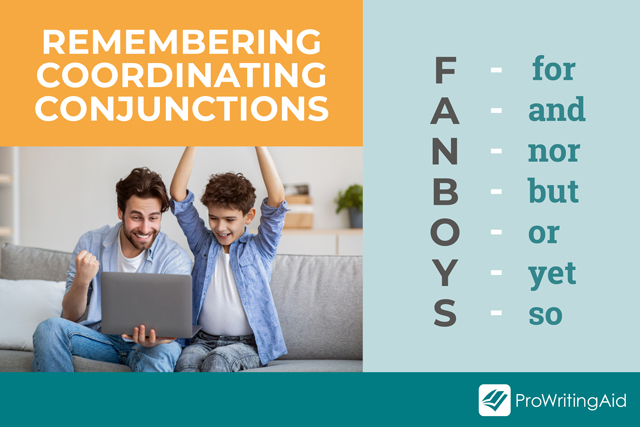
Let’s check out more examples of coordinating conjunctions.
Sentences with Coordinating Conjunctions
These sentences should help you understand how to use all seven FANBOYS coordinating conjunctions:
- I walked to the door, opened it quickly, and stepped inside to get away from the biting cold outside.
- She ran out of time, so she decided not to order dessert.
- You can use a mouse or a touchpad to scroll down on your computer.
- Austin does a phenomenal job, but he’s always late.
- Jane treasures her van, for it is her most expensive asset.
- I’ve never gone to college, nor have I ever wanted to.
- He hates beans, yet he keeps eating them for lunch.
Test Your Knowledge
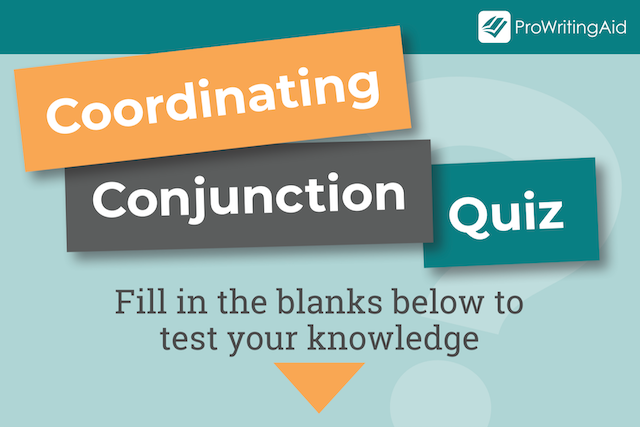
Let’s try a quick exercise to see if you’ve understood how to use coordinating conjunctions. Fill in the blanks below:
Do you want to go by train, bus, ................ plane?
- For
- Nor
- Yet
- Or
I hate school, ................ I am always top of the class!
- But
- And
- Yet
- For
Life is hard, ................ there’s always something to be grateful for.
- But
- Yet
- So
- For
You are awesome, ................ you are reading this article so intently.
- So
- Nor
- And
- For
Paul doesn’t do push-ups, ................ does he do any other exercise.
- So
- Yet
- Nor
- And
Quiz Answer Key
Waiting to see your score? Here are the answers:
Do you want to go by train, bus, or plane?
- For
- Nor
- Yet
- Or
I hate school, yet I am always top of the class!
- But
- And
- Yet
- For
Life is hard, but there’s always something to be grateful for.
- But
- And
- Yet
- For
You are awesome, for you are reading this article so intently.
- So
- Nor
- And
- For
Paul doesn’t do push-ups, nor does he do any other exercise.
- So
- Yet
- Nor
- And
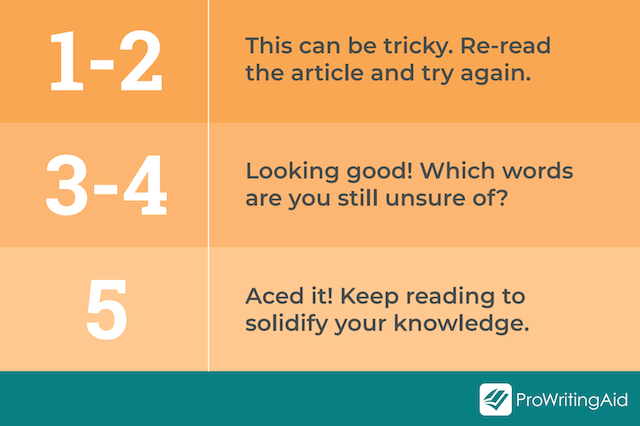
What Are The Most Common Coordinating Conjunctions?
We use all seven of these conjunctions all the time. However, these three are used more than the rest:
- And
- But
- Or
You guessed it:
And is the most used. You’ll see it throughout this and virtually any other article. You’ll find but and or in most writing as well.
What about the rest? So is still widely used. Some people consider for archaic (an old-fashioned form of because). Others believe nor is slowly going extinct. And you’ll get lots of content that doesn’t mention yet anywhere.
Let’s go deeper and understand how each of these words is used.

How to Use Coordinating Conjunctions Correctly
Each of the seven FANBOYS has its own rules. Let’s explore them one by one.
And
And joins grammatically similar expressions. Examples include:
- George and Peter are brothers.
- I love sleek phones and sophisticated computers.
If you have a list with three or more items, use and before the last one. Avoid using and multiple times in the same list. For instance:
- Correct: John woke up, washed his face, and brushed his teeth.
- Incorrect: John woke up and washed his face and brushed his teeth.
- Correct: His wife bought nuts, fruits, and vegetables.
- Incorrect: His wife bought nuts and fruits and vegetables.
- Correct: They love walking, jumping, and singing.
- Incorrect: They love walking and jumping and singing.
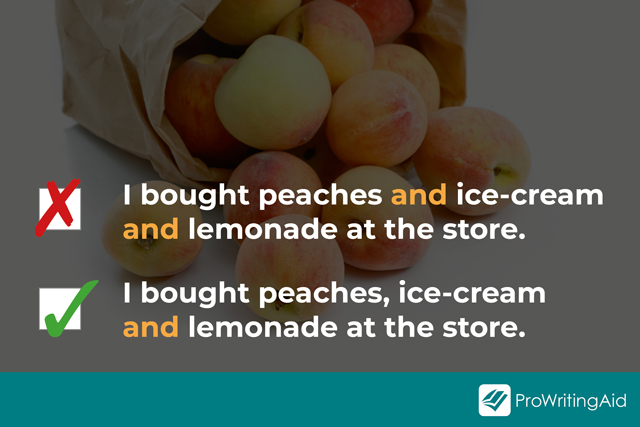
When talking or writing, we use some common expressions that use “and”. We should keep these expressions fixed. Do not change the word order—it'll sound strange.
For example, it’s black and white and not white and black. Here’s more:
- Salt and pepper
- Bits and pieces
- Facts and figures
- Heaven and hell
- Bread and butter
- Life and death
- Rise and fall
- Twists and turns
- Wear and tear
In numbers, and is used to separate bigger numbers from those that are smaller than a hundred:
524 is five hundred and twenty-four
2,000,227 is two million, two hundred and twenty-seven
It also separates whole numbers and fractions. For instance, 9½ is nine and a half.
But
But links two contrasting ideas. It’s easily confused with yet. We’ll talk about yet next so that you can see the difference clearly.
Here are some examples:
- Paul is slow, but he creates perfect paintings.
- I meant to come on time, but I got stuck in traffic.
- We hoped the weather would be sunny, but it began raining, so we had to cancel our plans and stay indoors.
But is not always a conjunction. If you use it to mean “apart from”, it becomes a preposition. It’s only a coordinating conjunction when you use it to join contrasting ideas.
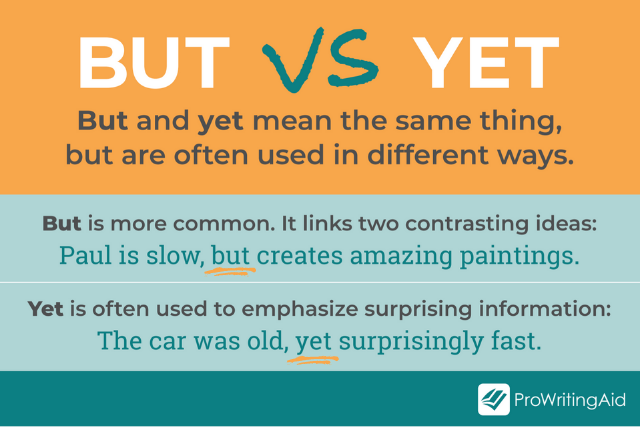
Yet
Yet shows contrast. However, it’s better used to introduce something shocking or surprising—that’s one simple way to differentiate it from “but”.
Here are some instances of when you might use "yet":
- We played the match in freezing weather, yet we had the time of our lives.
- That car is old, yet it’s surprisingly fast.
It’s still grammatically correct to replace yet with but. However, yet adds strength to the element of surprise.
When you use yet to signify time or an amount (e.g. "Are we nearly there yet?"), it becomes an adverb and is no longer a coordinating conjunction.
For
For explains a reason, similar to words like “because” and “as”. Depending on how you use it, for can be a preposition, too. It becomes a coordinating conjunction when you use it to give a reason.
Here are some examples:
- He always comes home on time, for he is an obedient boy.
- Cynthia has been sad lately, for she lost her job.
- Parents work hard, for they want the best for their children.
In modern writing, many people prefer using “because” instead of “for”. Some reserve its use for formal writing.
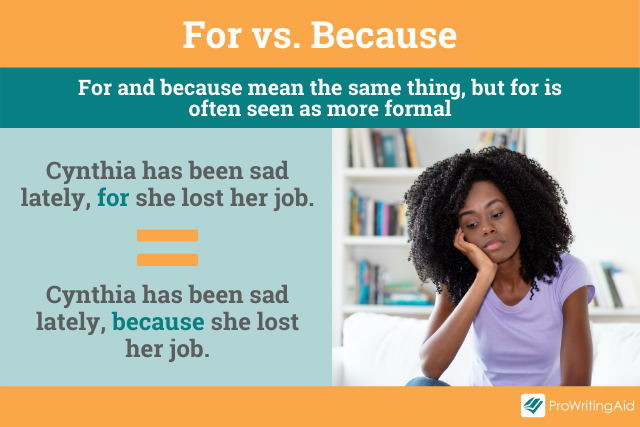
So
So shows the effect of something. It’s another confusing conjunction since it can easily be a subordinate conjunction. Consider it a coordinating conjunction if it connects two equal and independent clauses.
Examples include:
- She was constantly depressed, so she booked an appointment with a counselor.
- Sonia loves luxury, so she always buys the latest and sleekest cars.
- There was a terrible volcanic eruption, so the entire city had to be evacuated.
So has multiple uses as well. It becomes an adverb when you use it to qualify a verb or adjective, for instance, “She is so annoying”.
Nor
Nor expresses negation. Like and, it links two expressions. However, when using nor, both expressions should be negative.
See it in action below:
- She is fasting, so she will neither eat nor drink today.
- We should not forget the past, nor should we neglect the lessons we’ve learned.
- Jim has been running for an hour, but he’s not slowing down, nor is he stopping.
Reverse the order of verbs in the second clause when using nor. If the first clause had “did not”, the second clause should have “nor did he”.
When you use “nor” after “neither”, it becomes a correlative conjunction—a set of conjunctions that join ideas. Other examples of correlative conjunctions include “either/or”, “not/but”, and “both/and”, among others.
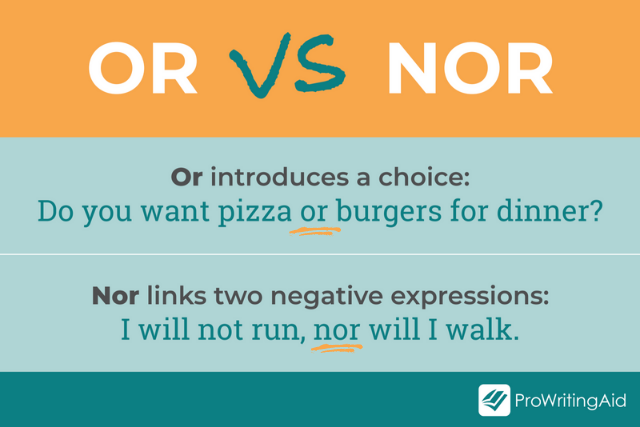
Or
Or introduces a choice. It can also be used for clarification or to show the result of an action.
Here are some examples:
- Shut up or go home.
- Do you want to watch a movie or listen to music?
Get Your Punctuation Right
Use a comma when joining two independent clauses with a coordinating conjunction.
Insert the comma just before the coordinating conjunction as shown in this example:
George is awesome, but he always shows up late.
If you’re writing a long sentence with multiple commas, you can use a semi-colon instead so that you don’t confuse your reader:
Martha really wanted to go to the mixer, meet some potential employers, and explore her options; but she was worried she might miss it altogether as her car was late.
Some instances of “or” do not require a comma:
- Are you reading or sleeping?
When writing a list, you can place a comma before “and” or “or”. That is called an Oxford or serial comma. It’s widely used in American English, while British English writers tend to ignore it. You do not commit any grammatical crime by using it or not.
Analyze your target audience before you decide whether to use the Oxford comma. If it’s predominantly American, include it in your writing. If not, then you can choose to omit it.
Here are examples of sentences with the Oxford comma:
- Invite Peter, Paul, Jane, Joan, and Catherine to the party tonight.
- Do you want to eat bread, croissant, cake, pie, or bacon for breakfast?
If you need to use the Oxford comma in your writing, you can set up a rule in your ProWritingAid Style Guide to remind you.

The most important rule with the Oxford comma is consistency. If you use it once, use it throughout your document. ProWritingAid will make sure your comma use is always consistent.
Can You Start Sentences with Coordinating Conjunctions?
Yes, you can start a sentence with a coordinating conjunction, regardless of what your teachers may have taught you. Doing that does not break any grammar rules.
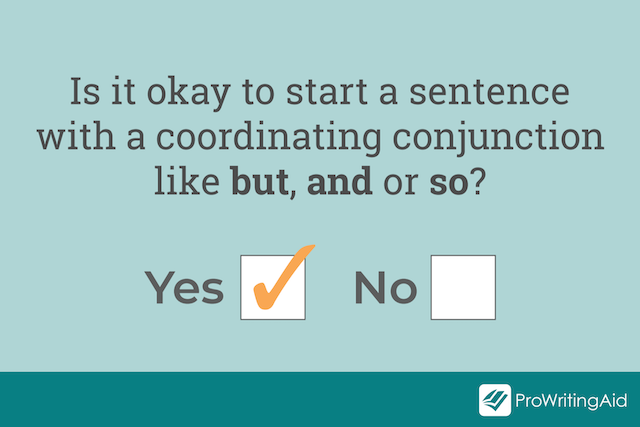
You’re probably wondering if this will mess up your writing and create a lot of sentence fragments. It won't, if you do it right.
To avoid sentence fragments, ensure you add a main clause right after the coordinating conjunction. That way, the sentence will not have any syntax errors.
Although it’s okay to start sentences with “and” and “but”, avoid doing so in consecutive sentences. Start with coordinating conjunctions only where it makes sense. To improve flow and readability, switch up the way you begin your sentences throughout your writing.
What Are Subordinating Conjunctions?
These two types of conjunctions link words and are both important in proper sentence construction.
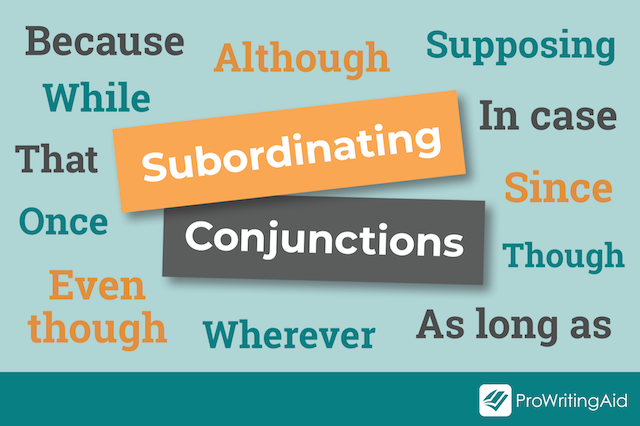
The difference is in the strength of what’s being linked. A coordinating conjunction links two elements that have equal strength. Subordinating conjunctions link dependent clauses to independent clauses.
We’ve already looked at some examples of coordinating conjunctions. Examples of subordinating conjunctions include:
| Because | Once |
Though |
That |
|---|---|---|---|
| Although | Since |
Wherever |
As long as |
| In case |
Supposing |
While | Even though |
There are many more subordinating conjunctions. These are just a few examples.
Perfect Your Sentence Structure
The coordinating conjunctions we have discussed in this article will help you create a coherent sentence. Remember the acronym FANBOYS. Check out the different examples we’ve shared to help you understand each coordinating conjunction better.
Keep practicing so that you perfect the art of writing powerful sentences. Use ProWritingAid to check your writing and ensure everything flows smoothly.